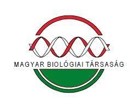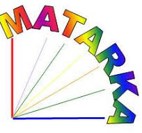A vízszintcsökkentés hatása erdei béka (Rana dalmatina) ebihalak egyedfejlődésére
Absztrakt
Az időszakos víztestekben szaporodó kétéltűek lárvái számára élőhelyük korai kiszáradása katasztrofális következményekkel járhat. Az ilyen szaporodóhelyeket használó fajok lárváinál a vízszintcsökkenés a túlélést elősegítő fenotípusos változásokat (adaptív fenotípusos plaszticitás) indukálhat. Magyarország kétéltűfaunájának egyik időszakos víztestekben is szaporodó tagja az erdei béka (Rana dalmatina). Manipulatív laborkísérletben vizsgáltuk, hogy a vízszint csökkentése indukál-e eltérést az erdei béka ebihalak életmenetében, morfológiájában vagy viselkedésében. Az általunk vizsgált populációban a vízszintcsökkentés nem befolyásolta sem az átalakulás idejét, sem a testalakot, ugyanakkor csökkentette az ebihalak mozgási aktivitását és kockázatvállalását, valamint a metamorfok testtömegét. Eredményeink alapján elmondható, hogy az erdei béka ebihalak reagálnak ugyan a vízszintcsökkentésre, de adaptív válasz helyett csak egy általános negatív hatás figyelhető meg. Vizsgálatunk eredményei nem támasztják alá azt a feltevést, hogy extrém száraz években fejlődésük felgyorsításával az erdei béka ebihalak el tudnák kerülni a kiszáradás megnövekedett veszélyét, de még ha időben át is alakulnak, úgy tűnik, a kisbékák rátermettsége csökkenni fog.
Hivatkozások
Altwegg, R. & Reyer, H-U. (2003): Patterns of natural selection on size at metamorphosis in water frogs. – Evolution 57: 872–882.
Beebee, T. J. C. (1996): Ecology and conservation of amphibians. – Chapman and Hall, London
Boone, D. M. & Semlitsch, D. R. (2002): Interactions of an insecticide with competition and pond drying in amphibian communities. – Ecol. Appl. 12(1): 307–316.
Bridges, M. C. (2002): Tadpoles balance foraging and predator avoidance: effects of predation, pond drying, and hunger. – J. Herpetol. 36: 627–634.
Crump, L. M. (1989): Effect of habitat drying on developmental time and size at metamorphosis in Hyla pesudopuma. – Copeia 3: 794–797.
Denver, J. R., Mirhadi, N. & Phillips, M. (1998): Adaptive plasticity in Amphibian metamorphosis: response of Scaphiopus hammondii tadpoles to habitat desiccation. – Ecology 79(6): 1859–1872.
Gerlanc, N. M. & Kaufman, G. A. (2005): Habitat of origin and changes in water chemistry influence development of western chorus frogs. – J. Herpetol. 39: 254–265.
Gosner, K. L. (1960): A simplified table for staging anuran embryos and larvae with notes on identification. – Herpetologica 16: 183–190.
Ghalambor, C. K., McKay, J. K., Carroll, S. P. & Reznick, D. N. (2007): Adaptive versus non adaptive phenotypic plasticity and the potential for contemporary adaptation in new environments. – Funct. Ecol. 21(3): 394–407.
Laurila, A. & Kujasalo, J. (1999): Habitat duration, predation risk and phenotypic plasticity in common frog (Rana temporaria) tadpoles. – J. Anim. Ecol. 68: 1123–1132.
Laurila, A., Pakkasmaa, A., Crochet, P. A. & Merilä, J. (2002a): Predator induced plasticity in early life history and morphology in two anuran amphibians. – Oecologia 132: 524–530.
Laurila, A., Karttunen, S. & Merilä, J. (2002b): Adaptive phenotypic plasticity and genetics of larval life histories in two Rana temporaria populations. – Evolution 56: 617–627.
Lawler, S. P. (1989): Behavioural responses to predators and predation risk in four species of larval anuras. – Anim. Behav. 38: 1038–1047.
Loman, J. (1999): Early metamorphosis in common frog Rana temporaria tadpoles at risk of drying: an experimental demonstration. – Amphibian-Reptilia 20: 421–430.
Loman, J. & Claesson, D. (2003): Plastic response to pond drying in tadpoles Rana temporaria: tests of cost models. – Evol. Ecol. Res. 5: 179–194.
Márquez-García, M., Correa-Solis, M., Sallaberry, M. & Méndez, M. A.(2009): Effects of pond drying on morphological and life-history traits in the anuran Rhinella spinulosa (Anura: Bufonidae). – Evol. Ecol. Res. 11: 803–815.
Nöllert, A. & Nöllert, C. (1992): Die Amphibien Europas: Bestimmung-Gefährdung-Schutz. – Stuttgart, Franckh-Kosmos Verlag.
Péchy, T. & Haraszthy, L. (1997): Magyarország kétéltűi és hüllői. – Magyar Madártani és Természetvédelmi Egyesület, Budapest.
Relyea, R. A. (2007): Getting out alive: how predators affect the decision to metamorphose. – Oecologia 152: 389–400.
Spieler, M. (2003): Risk of predation affects aggregation size: a study with tadpoles of Phrynomantis microps. – Anim. Behav. 65: 179–184.
Touchon, J. C., Gomez-Mestre, I. & Warkentin, K. M., (2006): Hatching plasticity in two temperate anurans: responses to a pathogen and predation cues. – Can. J. Zool. 84: 556–563.
Urszán, T. J., Török, J., Hettyey, A., Garamszegi, L. Zs. & Herczeg, G. (2015): Behavioural consistency and life-history in Rana temporaria tadpoles. – Oecologia, in press
Van Buskirk, J. & McCollum, S. A. (2000): Functional mechanism of an inducible defense in tadpoles: morphology and behaviour influence mortality risk from predation. – J. Evol. Biol. 13: 336–347.
Ward, R. D., Skibinski, D. O. & Woodwark, M. (1992): Protein heterozygosity, protein structure, and taxonomic differentiation. – In: Hecht, K. M. (Eds.): Evolutionary biology. Plenum press, New York, pp. 73–159.
West-Eberhard, M. J. (2003): Developmental plasticity and evolution. Oxford University Press.






